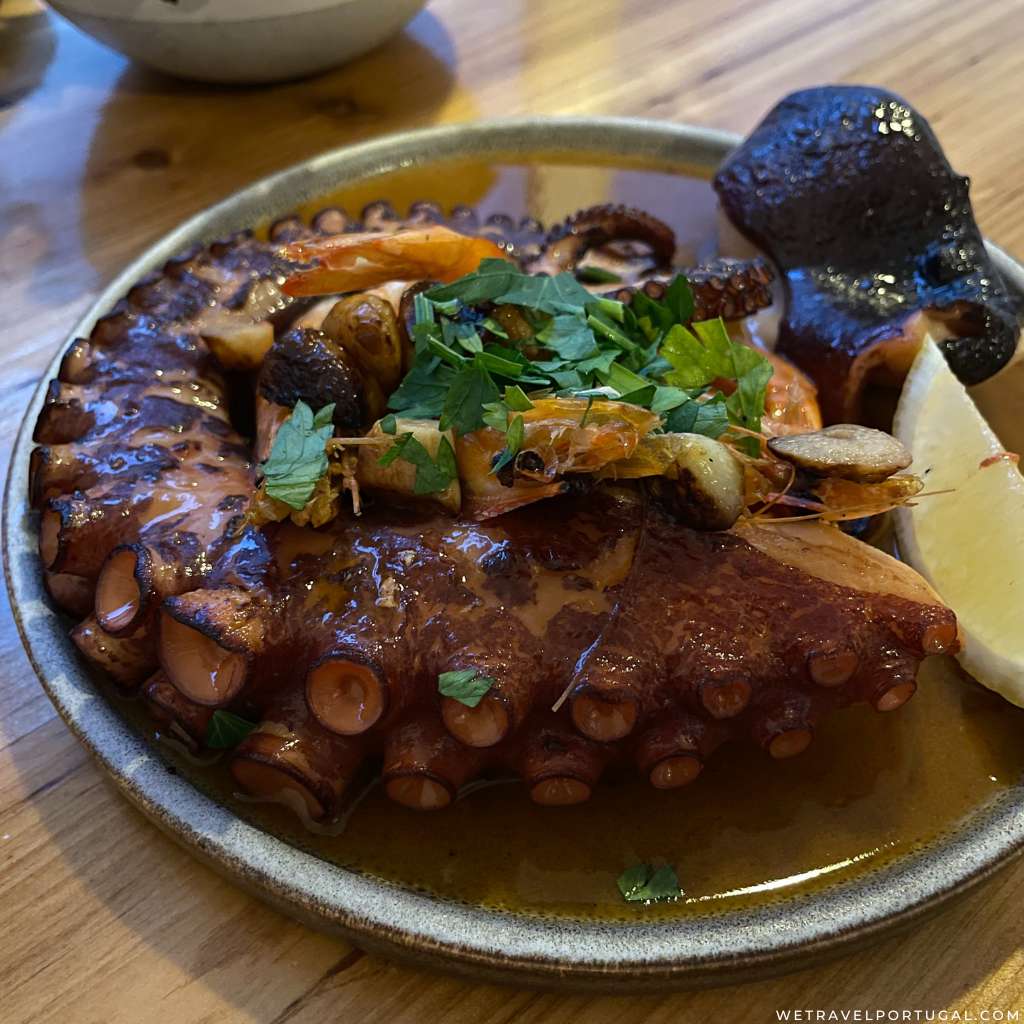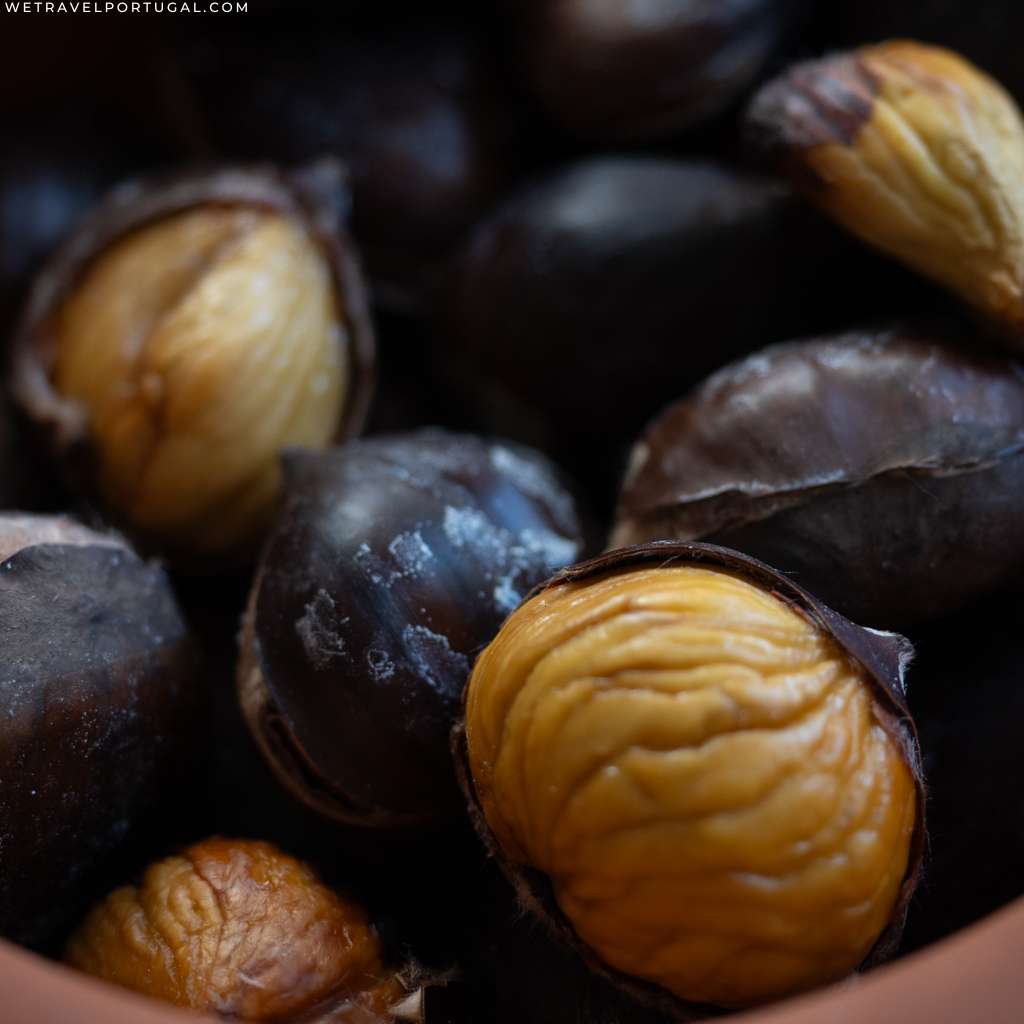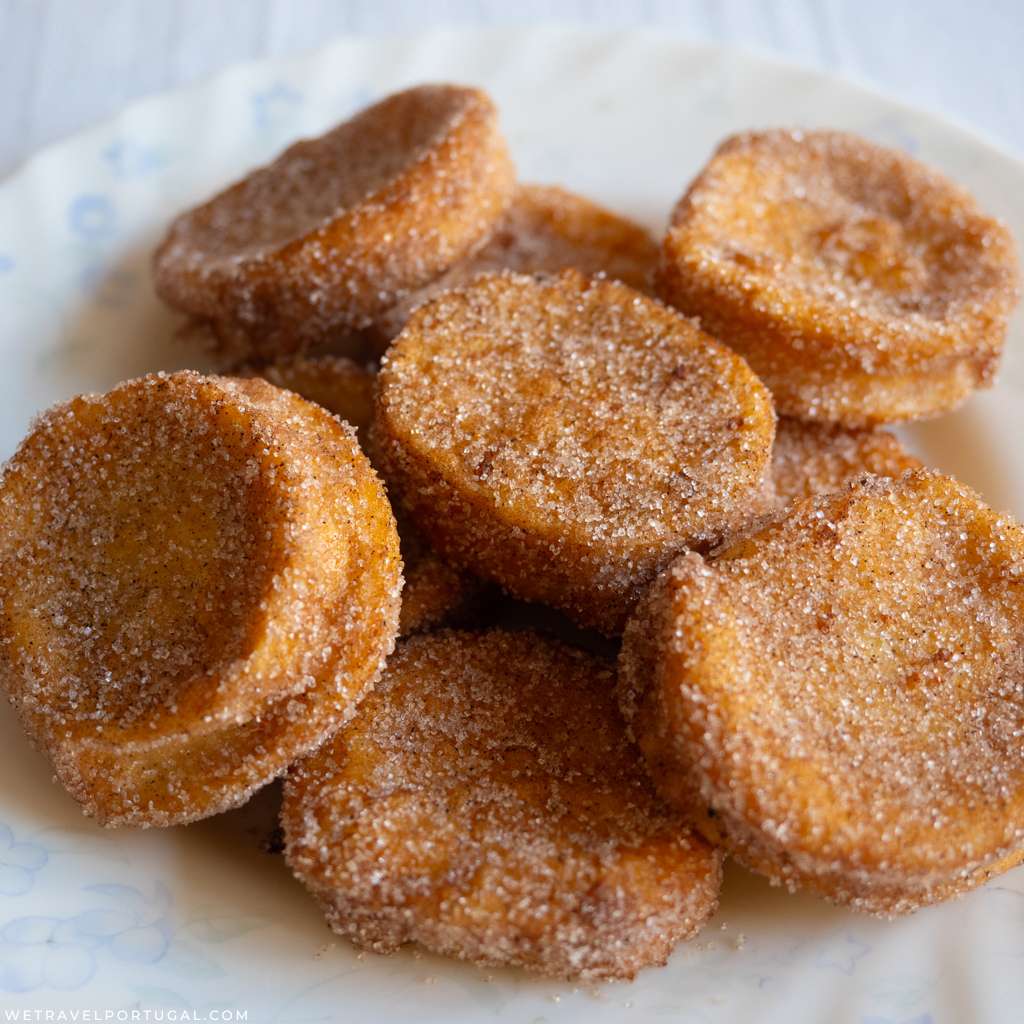Christmas is often a time of feasting and indulgence, and Portugal is no different. Towards the end of November, Portugal’s towns and cities take a turn towards the holidays. Christmas lights are lit in the citues, and the markets, and bakeries will bring much of their traditional Christmas food out! There are regional, and local favourites to be found, as well as the iconic bacalhau. Is there an event in Portugal that doesn’t involve bacalhau? For any visitors that will be here during the Christmas holidays, let’s explore traditional Portuguese Christmas food and what will be found on the tables of Portuguese homes during the holidays.
How do the Portuguese Celebrate Christmas?
Before we dive into the food, first let’s cover what actually happens during Christmas. Portuguese Christmas is usually split over the 24th with a lighter meal, and the 25th with a heavier meal.
Christmas Eve (Consoada)
Christmas celebrations in Portugal starts on the 24th – Christmas Eve, with what’s called Consoada. Typically, there’s a family dinner, a gift exchange, and many of Portugal’s Catholics will also head to Midnight Mass (Missa do Galo). Typically, the meal will be lighter, and following Catholic traditions which means meat will be absent from the table. This means a focus on bacalhau, and seafood. The most famous being Bacalhau da Consoada and Pastéis de Bacalhau. In some parts of Portugal, it’s also very common to eat octopus with either rice or roasted potatoes, as well as other seafood.
Christmas Day
Christmas Day is then a slower day with a focus on feasting and spending time with the family. It’s on the 25th that Portugal’s array of roast meats gets its moment. Turkey, lamb, and goat are all traditional options. So are the leftovers from the night before in a dish called Roupa Velha (Old Clothes). Roupa Velha is the leftover bacalhau refried and mixed together, often with more egg and chopped potatoes! During both days there will of course be an array of pastries, baked items, and of course desserts. Here’s our favourite Portuguese Christmas foods!

10 Traditional Portuguese Christmas Foods
- Bacalhau da Consoada
- Pastéis de Bacalhau
- Polvo à Lagareiro
- Cabrito Assado no Forno
- Peru Recheado
- Rabanadas
- Sonhos
- Arroz Doce
- Bolo Rei
- Bolo Rainha
Bacalhau da Consoada
The most traditional form of Christmas bacalhau is Bacalhau da Conosada. All things considered, this is a simple way of serving bacalhau, essentially everything is boiled separately, bacalhau, cabbage, potatoes, then served on a plate with a drizzle of excellent local olive oil. A simple dish that really is focussed on the bacalhau. On Christmas day this dish takes on a second form; Roupa Velha. This time the previously boiled cod is shredded, and has its skin and bones removed. The potatoes are sliced, and if needed more are added. Then it’s all fried together in one pan! A Portuguese form of Bubble and Squeak!

Pastéis de Bacalhau (Fried Codfish Cakes)
Pastéis de Bacalhau are a type of fritter or fishcake made from bacalhau. In this form bacalhau is shredded and mixed with onions, potatoes and herbs, then rolled into torpedoes and deep fried. They’re popular throughout the year, but always make an appearance at a Christmas feast!

Polvo à Lagareiro (Roasted Octopus)
If you’re looking for a traditional Portuguese seafood dish to serve at Christmas that isn’t bacalhau, look no further than Polvo à lagareiro. Roasted octopus makes an appearance at many tables over Christmas, especially in the North of Portugal in the regions of Minho and Trás os Monte. It’s believed this dish is heavily influenced by the coastal communities of Galicia and spread into Northern Portugal. It’s another dish that can be found year-round, but also found during Christmas on the tables of traditional households.

Cabrito Assado no Forno (Roasted Kid)
With the Bacalhau and seafood covered, lets move on to the traditional roast meats you’ll find during the Christmas day feast! One of the most typical, Cabrito Assado no Forno. Oven roasted young goat (kid). Goat might sound odd if you’re coming from the US or UK, but it’s a popular meat in Portugal, especially the Northern and inland regions. When roasted it’s very succulent and will be served alongside traditional vegetables like, roast potatoes, carrots, and broccoli.

Peru Recheado (Stuffed Turkey)
Turkey is another popular bird around Christmas time in Portugal, you’ll find it available at most supermarkets and butchers, it’s often seen as a cheaper option than lamb or the goat mentioned above. Peru Recheado is stuffed turkey, and although it seems like a traditional roasted and stuffed turkey, the secret is in the Portuguese stuffing. Like many places, the stuffing is a family secret, passed down from generation to generation and tweaked slightly.
Roasted Chestnuts
Chestnuts aren’t specifically a Christmas treat. However, they are often associated with the cooler months in Portugal. When visiting many of the Christmas displays around Portugal, you’ll often be able to see, and smell chestnuts roasting over charcoal. They are a popular snack across Portugal and will be served piping hot from the coals in a small paper bag. It’s not explicitly Christmas food, but you can’t help associating the two together as you wonder around Portugal’s Christmas markets, and Christmas lights!

Rabanadas
Moving on to the sweet side of the Christmas table, you have the delicious Rabanadas. These are often called Portuguese French toast, and they do have their similarities. However, Rabanadas are usually sliced stale rolls (sometimes even a papo seco) which give them their characteristic round and thicker shape, compared to sliced bread. These sliced rounds are then soaked in milk, not just plain milk, but lemon zest, vanilla, and sometimes even port! They are then soaked and fried in oil to give them a golden crust. The final step is being dipped in sugar and cinnamon, which gives you a thicker, fluffier, French toast.

Sonhos
To the untrained eye, sonhos seem very similar to rabanadas. They’re another fried bakery item that’s covered in sugar and cinnamon. However, the difference is in the dough, these are made from fresh dough verses the stale bread in Rabanadas. The fresh batter is then fried, and again fried, and covered with sugar and cinnamon. It’s more of a doughnut then a French toast. You’ll find lots of varieties available, some add pumpkin flesh to the dough to give it a sweeter and more dense texture. These are called Sonhos de Abóbora.
Arroz Doce
Rice pudding is a sweet rice that is common across many countries and cultures, however we have to say that arroz doce, the Portuguese variety is the best! The Portuguese variety is taken to almost luxury levels, through the addition of egg yolks to give it an even creamier more custard like texture. It’s then delicately sprinkled with cinnamon, its one of our favourite desserts throughout the year – not just at Christmas!

Bolo Rei
Bolo Rei, which literally translates to King Cake is one of the most eye-catching things found at bakeries and on tables during the Christmas period in Portugal. It’s shaped in a hollow circle almost like a wreath. Bolo Rei is a type of sweet cake with a bread like texture, the dough features the traditional Christmas aromas like cinnamon and orange, and it’s filled with dried fruits, nuts, and candied fruit. The top is the most eye-catching part, where it’s covered in large pieces of multicoloured candied fruit, often in reds and greens!

Bolo Rainha
Where there is a king, there’s often a queen and Bolo Rei is no different. Bolo Rainha is very similar to the Bolo Rei in shape and form. Except it differs from a Bolo Rei and omits the colourful candied fruit and is often topped with almonds. We actually prefer the Bolo Rainha to the Bolo Rei as we find all the candied fruit just a little too sweet for us!
Which do you prefer? Bolo Rei or Bolo Rainha? Let us know in the comments!

